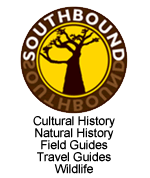In the far northwestern corner of South Africa lies the Richtersveld, recently inscribed towards the end of 2007 as South Africa’s 8th World Heritage Site. At first glance, it is a desolate and inhospitable place, with hot sandy plains and startling, jagged mountains of black rock. It is the world’s only biodiversity hotspot located in an arid region, where thousands of plant species, many of which are endemic to the area. It is also the home to the last remaining groups of Nama (Khoikhoi) people who still practise their traditional semi-nomadic lifestyle, living in portable reed huts and moving with their flocks of sheep and goats.
The Richtersveld travel guide contains all the information you need to explore this stunning region. It covers the geological, botanical and cultural history of the area, and it contains full details of where to stay and what to do. The guide includes the Richtersveld Community Conservancy, the Richtersveld National Park, the nearby towns of Alexander Bay and Port Nolloth, and crosses the border into Namibia, where the Richtersveld is joined with the Ai-Ais hot springs and the Fish River Canyon (second largest in the world) in a spectacular Transfrontier Conservation Area.
The Richtersveld is also part of the greater Namaqualand region, which runs south from the Orange River for several hundred kilometers. This beguiling part of the world has won international renown for its annual spring-flower spectacle, when millions of flowers burst forth to mount a staggering display that attracts visitors from all over the world.
§ Back to list |







